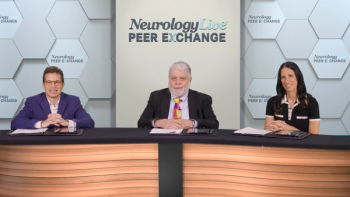
STATHMIN-Targeting Therapy QRL-201 Enters Dose Range-Finding Phase Following Successful PK Analysis
Key Takeaways
- QRL-201 progresses to dose range-finding phase in ANQUR trial, targeting STATHMIN-2 expression in ALS patients, including C9orf72-related ALS.
- STATHMIN-2 reduction in ALS is linked to TDP-43 pathology, crucial for neural repair and axonal stability.
QRL-201, developed by QurAlis, aims to restore STATHMIN-2 (STMN2) expression, a key protein for neural repair, which is significantly reduced in patients with ALS.
In recent news, QurAlis announced that its investigational agent QRL-201, a therapy designed to restore STATHMIN-2 (STMN2) expression, is entering the dose range-finding (DRF) portion of its phase 1 ANQUR clinical trial (NCT05633459) of patients with amyotrophic lateral sclerosis (ALS). The decision comes after the therapy successfully completed its dose-escalation portion of the trial, as cerebrospinal fluid (CSF) exposure levels met or exceeded the targeted therapeutic range.1
In the upcoming DRF phase, investigators will assess 2 doses of QRL-201 while including additional biomarkers and a cohort of patients with C9orf72-related ALS in addition to the original cohort of sporadic ALS. In this next step, the study will enroll an additional 48 participants: 32 participants with sporadic ALS and 16 participants with C9orf72-related ALS. In this global, double-blind, placebo-controlled phase 1 trial comprising 64 participants, the primary objective and end point is safety and tolerability of QRL-201.
"ALS is a devastating, fatal neurodegenerative disease with a large unmet medical need. Our mission is to make a meaningful difference in patients' lives, and we believe QRL-201 could potentially modify disease progression and improve outcomes in ALS patients who have a loss of STMN2 due to TDP-43 pathology," Kasper Roet, PhD, chief executive officer and co-founder at QurAlis, said in a statement.1 "The PK data analysis from the first two completed cohorts of ANQUR indicated CSF exposures of QRL-201 met or exceeded the targeted therapeutic range. These findings further support our confidence in the potential therapeutic effect of QRL-201 in the treatment of sporadic ALS."
The decision to now include patients with C9orf72-related ALS was based on a previous expression analysis in which investigators observed consistent mis-splicing of STMN2 in this patient cohort. ANQUR is currently active in Canada, the UK, and the EU, with cohorts 1 and 2 successfully completing dosing. A DRF study design amendment has been approved in Canada and the UK, with EU approval expected soon, and the first DRF phase participant has been dosed in Canada.
STATHMIN-2, a key protein involved in neural repair and axonal stability, is significantly reduced in most patients with ALS. Research has shown that nearly all ALS patients exhibit pathological mislocalization of the RNA-binding protein TDP-43, with mutations in its gene linked to familial ALS. In 2019, QurAlis co-founder Kevin Eggan, PhD, identified that STMN2 expression, which encodes a microtubule regulator, decreases following TDP-43 knockdown and mislocalization, as well as in motor neurons and spinal cords of ALS patients.
"We are pleased that the first participant in Canada has been dosed in the dose range-finding stage of the ANQUR clinical trial," Doug Williamson, MD, chief medical officer at QurAlis, said in a statement.1 "This represents a significant milestone in the QRL-201 program to evaluate a potential transformative breakthrough precision medicine for patients with sporadic ALS."
In 2021, a study published in Frontiers in Aging Neuroscience further connected a novel STMN2 variant to ALS risk, suggesting potential disease-modifying effects. This case-control study, involving 321 ALS patients and 332 controls, used advanced genotyping techniques to analyze CA repeats. Results revealed a significant association between the long/long CA genotype and disease risk (P = .042), particularly when one allele contained 24 CA repeats (P = .0023).2
Additional findings highlighted that longer CA alleles were linked to earlier ALS onset (P = .039) and reduced survival in bulbar-onset cases (P = .006). Reduced STATHMIN-2 mRNA expression was also observed in sporadic patient-derived cells. Notably, the STMN2 24 CA repeat was found in 11.5% of ALS cases, suggesting it may identify disease risk in a larger subset of sporadic ALS patients compared to the currently known genetic markers.
More recently, in September,
REFERENCES
1. QurAlis' ANQUR Clinical Trial of QRL-201 in ALS Advances to Dose Range-Finding (DRF) Phase With First Participant Dosed. News release. QurAlis. November 19, 2024. Accessed December 2, 2024. https://www.prnewswire.com/news-releases/quralis-anqur-clinical-trial-of-qrl-201-in-als-advances-to-dose-range-finding-drf-phase-with-first-participant-dosed-302307803.html
2. Theunissen F, Anderton RS, Mastaglia FL, et al. Novel STMN2 variant to amyotrophic lateral sclerosis risk and clinical phenotype. Front Aging Neurosci. 2021;13. doi:10.3389/fnagl.2021.658226.
3. QurAlis Doses First Participant Cohort in Phase 1 Multiple-Ascending Dose (MAD) Clinical Trial Evaluating QRL-101, a First-in-Class Kv7 Precision Therapy for ALS. News release. QurAlis. September 10, 2024. Accessed December 2, 2024. https://www.prnewswire.com/news-releases/quralis-doses-first-participant-cohort-in-phase-1-multiple-ascending-dose-mad-clinical-trial-evaluating-qrl-101-a-first-in-class-kv7-precision-therapy-for-als-302239922.html
Newsletter
Keep your finger on the pulse of neurology—subscribe to NeurologyLive for expert interviews, new data, and breakthrough treatment updates.




































